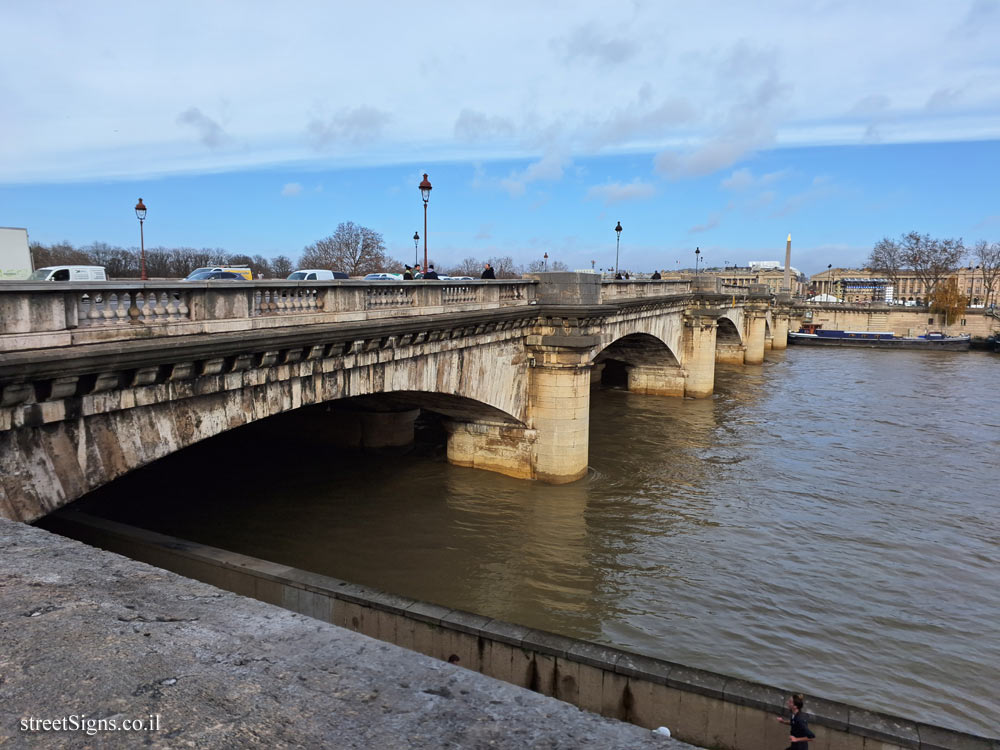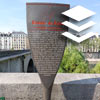One of the series of signs describing historical places in Paris. The signs were placed starting in 1992 and are also called sucettes Starck (Starck’s Lollipops) after Philippe Starck who designed them.
The plaque describes the history of the construction of the Concorde Bridge. A spicy detail indicated on the sign, in its construction they used stones from the Bastille that was destroyed in the French Revolution - "so that the people could step on the old fortress continuously"
A view of the bridge from where the sign stands can be seen in the photo taken that day
 Click for a larger image
Click for a larger image  Click for a larger image
Click for a larger image And from another angle
 Click for a larger image
Click for a larger image More details about the bridge on the sign from the "Seine Bridges in Paris" series
 Click for sign's details Translation of the text on the sign
Click for sign's details Translation of the text on the sign:
[An illustration of a ship, symbolizing the symbol of Paris]
History of Paris The Concorde Bridge By letters patent of July 3, 1722, Louis XV authorized the provost of merchants and the aldermen to build a new bridge, very necessary to serve the Saint-Germain district and facilitate traffic, already annoyingly renowned for its difficulties... Planned in 1725, the work was not undertaken before 1787, due to lack of funds. They were entrusted to Jean Rodolphe Perronet (1708-1794), engineer, organizer and director of the School of Bridges and Roads since 1747. In 1789, during the demolition of the Bastille, its stones were used for the progress of the work , “so that the people could continually trample the ancient fortress underfoot.” Completed in 1791, named after Louis XVI before being called Pont de la Révolution between 1792 and 1795, it was then dedicated to Concorde until 1814, and, definitively, since 1830. Widened considerably in 1931, it leads to the Palais-Bourbon, whose ancient temple facade matches that of the Madeleine.

 Click for a larger image
Click for a larger image  Click for a larger image
Click for a larger image  Click for a larger image
Click for a larger image  Click for sign's details
Click for sign's details  Click for all signs belonging to The History of Paris (Starck's Lollipops)
Click for all signs belonging to The History of Paris (Starck's Lollipops)
 589 Meter |
589 Meter |  638 Meter |
638 Meter |  708 Meter |
708 Meter |  827 Meter |
827 Meter |  905 Meter
905 Meter